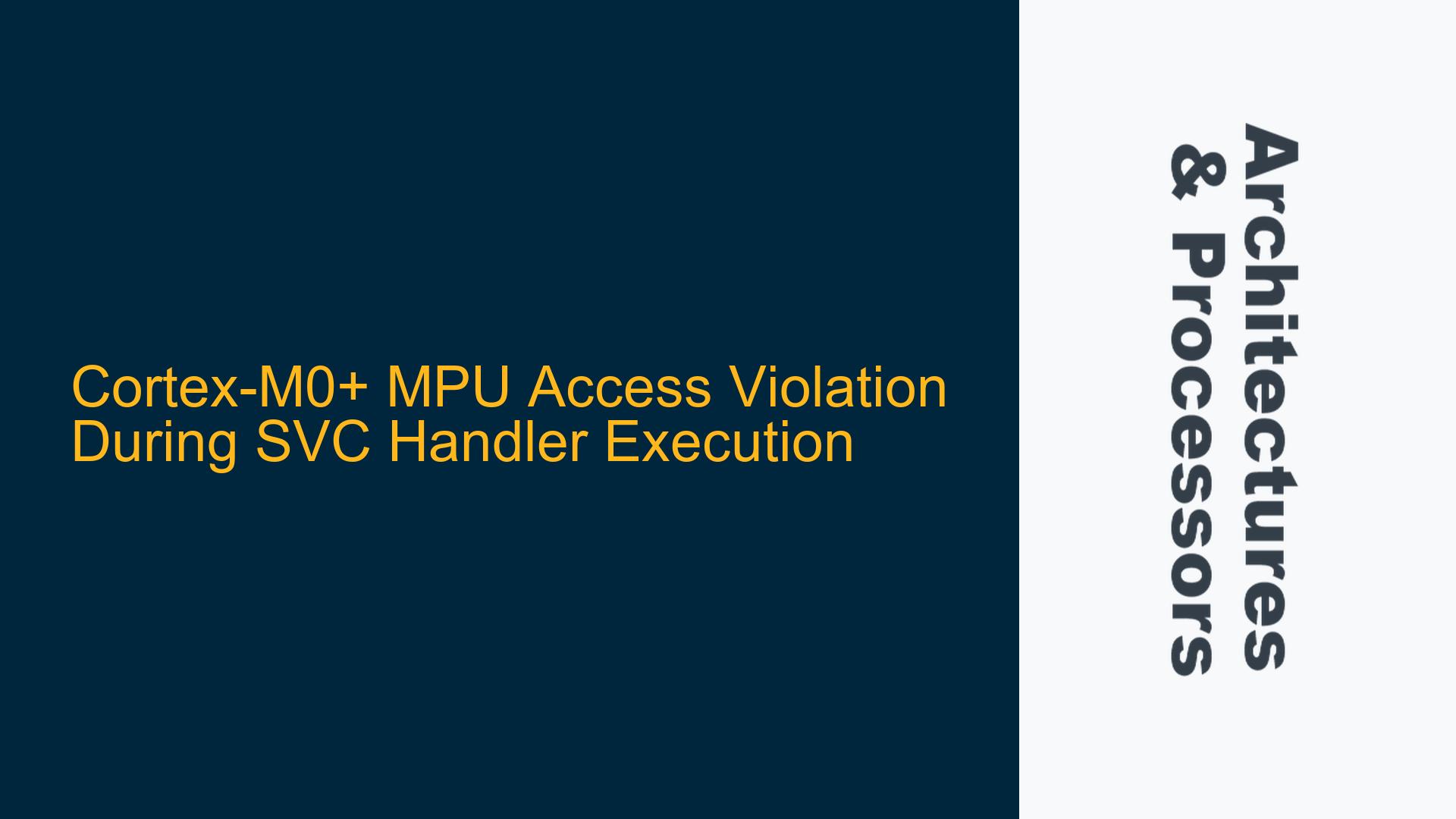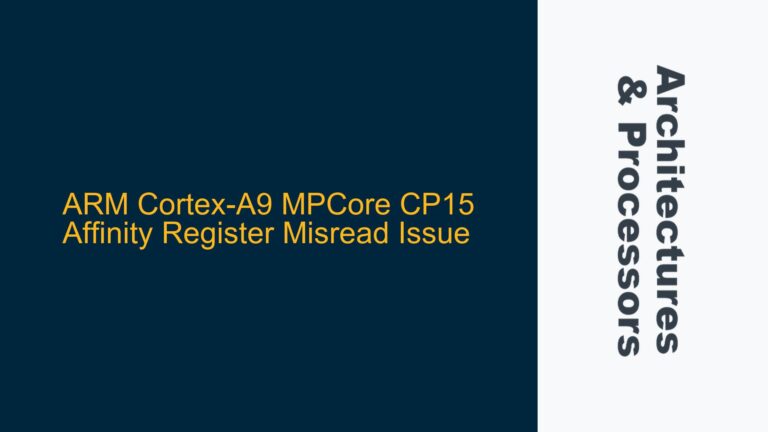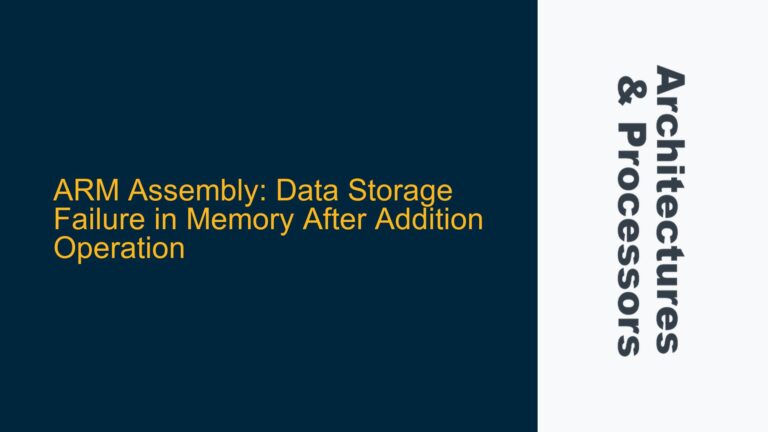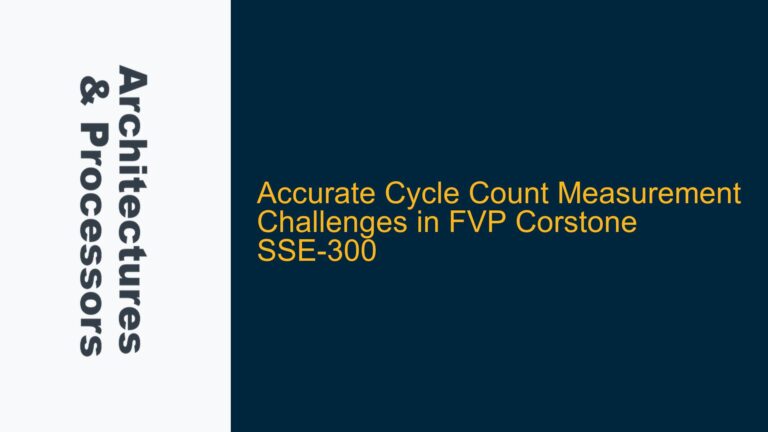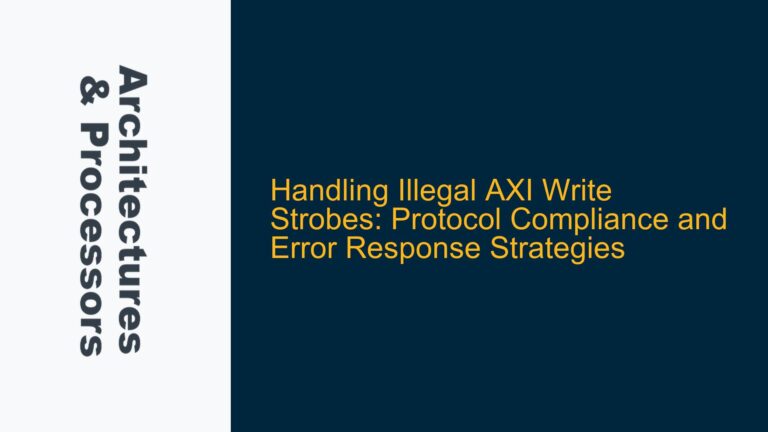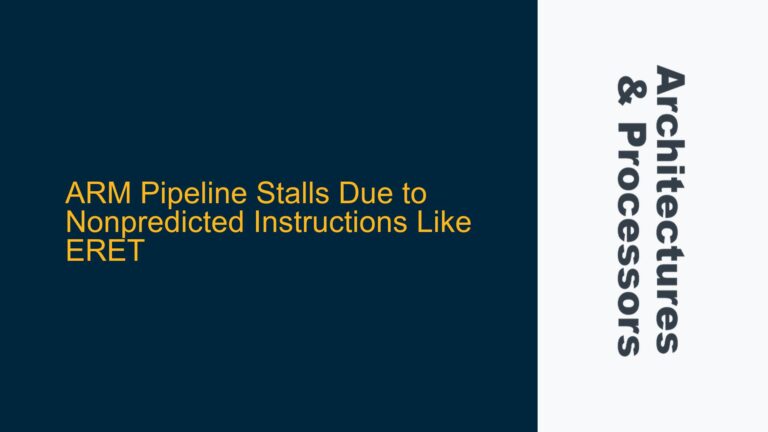Cortex-M0+ MPU Access Violation During SVC Handler Execution
The Cortex-M0+ processor, while being a lightweight and efficient ARM core, presents unique challenges when combining the Memory Protection Unit (MPU) with Supervisor Call (SVC) instructions. A common issue arises when transitioning between privileged and unprivileged modes, particularly when the MPU is configured to restrict access to specific memory regions, such as the main stack. This problem manifests as a hard fault when an SVC call attempts to regain privileges and return to the main scheduler function, but the MPU denies access to the main stack due to unprivileged access restrictions. Understanding the root cause of this issue requires a deep dive into the Cortex-M0+ architecture, the MPU’s behavior, and the interaction between SVC handlers and privilege levels.
MPU Configuration and Privilege Level Mismatch During SVC Execution
The Cortex-M0+ MPU is designed to enforce memory access rules based on the current privilege level of the processor. When the processor is in thread mode, it can operate in either privileged or unprivileged mode, depending on the configuration of the CONTROL register. In privileged mode, the processor has unrestricted access to all memory regions, while in unprivileged mode, access is restricted based on the MPU’s region settings. The main stack, which is typically used by the privileged scheduler function, is often configured to allow full access (read/write/execute) in privileged mode and restricted access (e.g., read-only) in unprivileged mode.
The SVC instruction is used to generate a software interrupt, which transitions the processor from thread mode to handler mode. In handler mode, the processor always operates in privileged mode, regardless of the previous privilege level in thread mode. This is a critical detail, as it implies that the SVC handler should have unrestricted access to all memory regions, including the main stack. However, the issue arises because the MPU’s access checks are still enforced during the execution of the SVC handler, even though the processor is in privileged mode. This behavior is not immediately intuitive and can lead to hard faults if the MPU is not configured correctly.
The root cause of the hard fault in this scenario is a mismatch between the expected privilege level during SVC handler execution and the actual privilege level enforced by the MPU. When the SVC handler attempts to access the main stack, the MPU checks the access permissions based on the original privilege level of the task that initiated the SVC call. If the task was running in unprivileged mode, the MPU will enforce the unprivileged access restrictions, even though the processor is now in privileged handler mode. This results in an access violation and triggers a hard fault.
Implementing Correct MPU Configuration and SVC Handler Privilege Management
To resolve the MPU access violation during SVC handler execution, it is necessary to ensure that the MPU is configured correctly and that the SVC handler manages privilege levels appropriately. The following steps outline the necessary actions to address this issue:
Step 1: Verify MPU Region Configuration
The first step is to verify that the MPU regions are configured correctly, particularly the region that protects the main stack. The main stack should be configured to allow full access (read/write/execute) in privileged mode and restricted access (e.g., read-only) in unprivileged mode. This ensures that the scheduler function, which runs in privileged mode, can access the main stack without restrictions, while unprivileged tasks are prevented from modifying the stack.
The MPU region configuration can be verified by examining the MPU Region Base Address Register (MPU_RBAR) and the MPU Region Attribute and Size Register (MPU_RASR). The MPU_RBAR specifies the base address of the region, while the MPU_RASR defines the size, access permissions, and other attributes of the region. The following table summarizes the key attributes that should be set for the main stack region:
| Attribute | Value for Main Stack Region |
|---|---|
| Base Address | Address of the main stack |
| Size | Size of the main stack |
| Access Permissions | Privileged: Full access |
| Unprivileged: Read-only | |
| Execute Never (XN) | Disabled (allow execution) |
| Shareable | Typically non-shareable |
| Cacheable | Depends on system requirements |
Step 2: Ensure Correct Privilege Level During SVC Handler Execution
The second step is to ensure that the SVC handler executes with the correct privilege level. Although the processor is in privileged handler mode during SVC execution, the MPU’s access checks are still based on the original privilege level of the task that initiated the SVC call. To avoid access violations, the SVC handler must explicitly elevate the privilege level before accessing the main stack.
This can be achieved by modifying the CONTROL register within the SVC handler to ensure that the processor operates in privileged mode. The CONTROL register controls the privilege level and stack pointer selection in thread mode. By setting the CONTROL register to use the main stack pointer (MSP) and enabling privileged mode, the SVC handler can ensure that it has unrestricted access to the main stack.
The following code snippet demonstrates how to modify the CONTROL register within the SVC handler:
void SVC_Handler(void) {
// Save the current CONTROL register value
uint32_t control = __get_CONTROL();
// Set the CONTROL register to use the main stack pointer and enable privileged mode
__set_CONTROL(0x00);
// Access the main stack here
// ...
// Restore the original CONTROL register value
__set_CONTROL(control);
// Return from the SVC handler
__ASM volatile ("BX LR");
}
Step 3: Implement Proper Stack Switching and EXEC_RETURN Handling
The third step is to ensure that the stack switching and EXEC_RETURN handling are implemented correctly when transitioning between tasks. The EXEC_RETURN value in the Link Register (LR) determines which stack pointer (MSP or PSP) is used when returning from an exception handler. When returning from an SVC handler, the EXEC_RETURN value must be set correctly to ensure that the processor uses the appropriate stack pointer for the next task.
If the next task is to run in unprivileged mode, the EXEC_RETURN value should be set to use the process stack pointer (PSP). If the next task is to run in privileged mode, the EXEC_RETURN value should be set to use the main stack pointer (MSP). This ensures that the stack pointer is correctly aligned with the privilege level of the next task.
The following code snippet demonstrates how to set the EXEC_RETURN value correctly when returning from an SVC handler:
void SVC_Handler(void) {
// Determine the privilege level of the next task
uint32_t next_task_privilege = ...; // Set based on task configuration
// Set the EXEC_RETURN value based on the next task's privilege level
uint32_t exec_return;
if (next_task_privilege == PRIVILEGED) {
exec_return = 0xFFFFFFF9; // Return to privileged mode using MSP
} else {
exec_return = 0xFFFFFFFD; // Return to unprivileged mode using PSP
}
// Set the